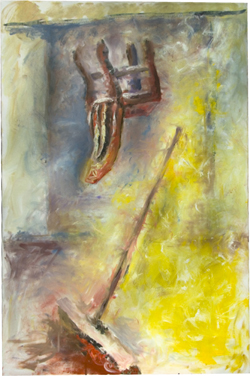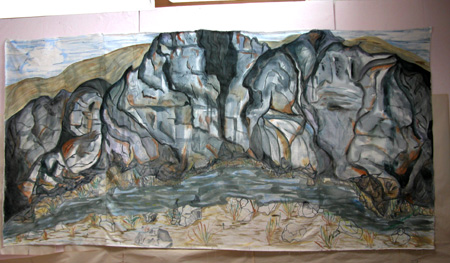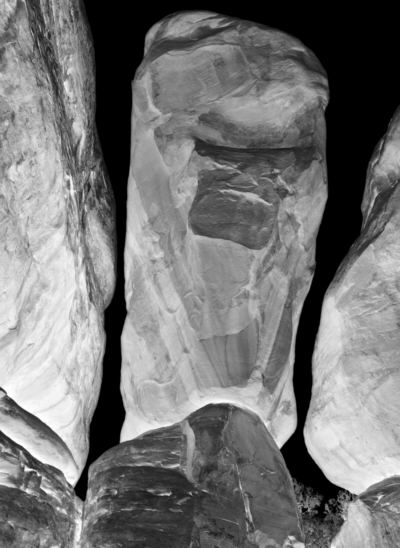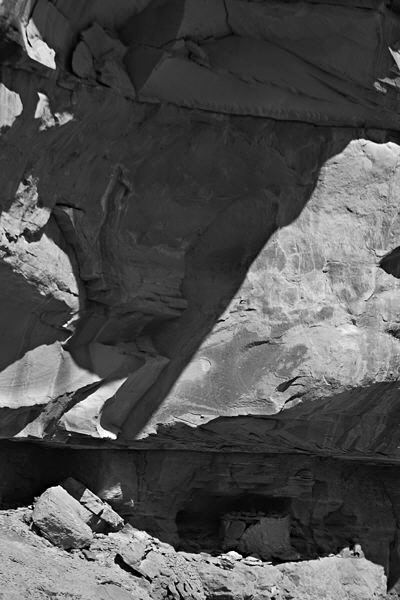
Title: Give Peace a Chance
Size: 170 x 78 cm
Medium: Oil on Canvas
Description: Art that changes the World!
a multi-disciplinary dialog

Title: Give Peace a Chance
Size: 170 x 78 cm
Medium: Oil on Canvas
Description: Art that changes the World!
To ‘Paint Air’ was the assignment in a painting class at college. Nina’s approach was to paint a chair floating upside down.

How do you depict air using photography, textile art, drawing or painting?

I’ve been thinking about the planes on which we work, that is, the stretched canvas, the photograph, and the quilted textile. This is partly in response to my interest in analyzing quilted textiles vis-a-vis more traditional media, say, oil paintings. But my thinking has also been triggered by some reading I’m doing; I’ll reference the readings at the end of this post.
With stretched canvas, some questions revolve around how the picture plane is used (as a window, as a flat surface, or extended out into frontal space and rounded so there’s a back side to the image.) more… »
“A photographer is like a cod, which produces a million eggs in order that one may reach maturity.”
–George Bernard Shaw
Photographers are a profligate, wasteful bunch. Maybe not those 4×5 guys, where it takes so much effort to decide to take one picture, but I’m a 35mm guy. I don’t understand large format; it’s a different animal entirely. For me the singular unit is the roll, not the frame. I learned my craft in the era of roll-it-yourself film in reusable cassettes. I found my voice by photographing over, and over, and over again, until I figured it out, in a manner that made it affordable.
I have structured my entire creative process around this unique feature of the photographic process. I shoot in order to find out what it is that is compelling to me. The actual act of operating a camera is how I access the state of consciousness from which my photographs emerge. The more complex the environment I am working in, the more that I can depend on my unconscious mind to find the coherent, complete image.
An aside: In the digital realm, the last barriers to restraint when shooting are pretty much history. Unless you give into temptation, and watch the LCD screen. Seeing your pictures while you’re shooting them is a sure way to interrupt and defeat the process of deepening a connection with the moment. The editing brain is a different one than the shooting brain. It defeats the point to mix them up.
When I’m shooting I don’t know where in the process I’ve “got it”. But I do know when I’m done. Somewhere in there, while I was in that altered state of consciousness, I can sense that it happened. Where precisely, I don’t know. I have to figure that out later.
That “later” process doesn’t get enough attention. Somehow you have to decide which egg you’re going to allow to hatch. It requires a degree of removal from the act of conception, to witness and judge the work for the formal qualities that exist only in the image, and not in your memory of the moment. Henry Wessel, a photo hero of mine, takes it to an extreme unmanageable for most of us. He waits a year to review his work before deciding what to print.
Back in the darkroom days, I’d scan my contact sheets to see which images had some promise, and I’d make work prints. I’d post the prints in the kitchen on a big bulletin board for a few days. It’s one thing to study and consider the work—it’s another to see them in your peripheral vision without knowing you’re looking at them. I’d gradually weed out the prints that were starting to bore me, until there were one or two survivors. These were what I would work on deeper, in the darkroom, to see what potential they held.
I’m still working on the best way to bring this editing process into the digital age. For most of my output my only encounter with the image is on a computer screen. It is not a friendly environment for either a considered, or an unconscious judgement process. Sometimes I’ll go through the effort of making work prints, just like the old days, but it’s harder. It feels removed from something intrinsic to the digital process, and I haven’t found the analogous replacement for the editing mode. I’ll report again in six months and tell you what I’ve figured out.

On my way to Anasazi country recently, I stopped at Arches National Park, where I stayed the night. Next morning before dawn, I was off to an area known as the Devil’s Garden, which I had never visited. It turned out to be one of the weirdest landscapes I’ve ever seen: a few trees and other plants sprinkled among mostly bare reddish sandstone, eroded into bizarre shapes determined partly by crack systems. Although the day before I had ignored the more famous features, I immediately got to work making pictures. Almost as quickly, the metaphor of bones came to me. These rocks were like internal structural elements somehow made visible at the surface. I knew the series would have to be titled Bones of the Earth.

Last week I postulated that Art Deco as an art movement speaks a distinctly queer language. This week The New York Times asks how openly and assertively gay artists reflect the emergence of gay culture into the mainstream. It’s a fascinating article that speaks very much to the issue of how art both reflects and influences cultural change. While words are one thing, the work itself goes a lot further in answering the questions. What is gay art? What is it reflecting? How is it reflecting and changing gay culture and the culture at large? Rather than talk about the work of the artists discussed in today’s Times, I attempted to visually represent the leading edge of this supposed new school of art. As a gay man I am of course fascinated by this work and its collective messages, but I’m more curious to know what straight men and women think. However, while I look forward to your opinions I would also postulate that even those of you who are “straight” are, as artists, absolutely queer as well, regardless of who you bed so I’m not really sure you can provide a “straight” perspective…nonetheless…

I’ve just returned from my trip to Utah in pursuit of earlier denizens, the Anasazi. Like the proverbial tourist, I won’t know what it was like until I’ve seen my pictures. Not because I never took my camera from my eye — it was there less than 1% of the time — but because the trip is not over yet. I’m done exploring the canyons for now, but I’ve just begun to explore the latent content of my experiences and the images captured by my camera. That will take longer, and I know there’s plenty of discovery still to happen. Nevertheless, one idea can be identified that is not entirely a surprise.